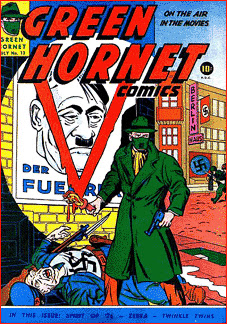PLEASE WATCH THIS QUICK VIDEO, THEN START READING.
This blog proposes that you can make your own earnest PSA (not the endless spoofs and parodies on the web and tv) and you may actually get to share it with your school, local county community access station, public schools channel, website, or blog. Below are more examples and steps to creating a PSA. Keep in mind PSAs can also be posters, pamphlets and even songs, but that is another blog. Get your learners together in groups of at least 4 people
PREPARING TO TELLING THE STORY
How can you grab the attention of a viewer and present the cause of your message. Do you use a true life statement, a fictional story, a cartoon, a teaser (meant to keep a viewer guessing till the end). There are endless ways to tell your stories about abuse, sickness, financial awareness and poverty.WHAT IS YOUR MESSAGE (or your cause)
Ask yourself and your students what is of great concern, anguish or alarm in their lives and the world around them. What are things that are being ignored and overlooked. What do want people to be more informed of. Autism, Staying Out of Debt, Teen Driving Safety, Reducing Pollution, Knowing Your Community Resources are just a few of numerous examples.
WHO ARE YOU TEACHING?
Scruff McDuff is mostly for children but what if you want to teach adults about how they can reduce crime?
RESEARCH
What are some important facts that you want to present or is there one overwhelming point you to get across. Look into what the experts say. Look at the risk factors that are contributing to the problem.
BRAINSTORM, BRAINSTORM, BRAINSTORM! (don't forget creativity)
How will you take this information and create a script or scenario and develop a short story to inform the public. Is a parade appropriate? A music video? A cartoon (which can be made in PowerPoint or by hand)? Will fantasy be incorporated or grim reality? Does your video include a mascot or a spokesperson?
PRODUCTION (what you need to create the video)
Does your group need to film inside or outside? Are you going to make costumes and props? Conduct interviews or create re-enactments?
SOME INTERESTING EXAMPLES
UNWRAPPING A POPULAR IMAGE
It is unbelievable today that the idea of a cigarette being life threatening was at one time, shocking. One of the first organizations to try to use PSAs on television to inform audiences of the risks of tobacco use was the American Heart Association. According to many interesting (and unintentionally funny) posts on YouTube, the famous Johnny Smoke anti-smoking ad created by the American Heart Association in 1968 left a chilling impression on the baby boomer generation. Take a minute to watch this famous commercial, then continue reading.Why a cigarette bandit on horse back in the Old West? In the late 1960s nearly 69% of high school seniors smoked cigarettes. Many of the nations most popular television programs were sponsored by tobacco companies. Johnny Smoke was most likely created to strike directly at a popular image in the 1960s; the cool, macho, smoking cowboy, popularized in westerns, and especially "The Marlboro Man" TV commericials. PSAs like Johnny Smoke must have had an effect on the general public. Cigarette ads were no longer shown on television after 1971.
*NOTE - Many creative PSA's have used limited animation and graphics since realistically they carry a message more effectively. This is also a rule of effective instructional design.
*NOTE - Encourage your learners to think about a particular image in their culture that they would like to unwrap.
TELL A TRUE STORY
Actor Yul Brynner (1920-1985)was a very popular actor and director who was diagnosed with lung cancer. This video was released after his death. It is a straightforward testimony from a legendary start. Also of interest are the John Wayne ads for the American Cancer Society.
RESOURCES AND SUGGESTIONS
WHAT TO USE
A simple digital camera can go a long way. For college students working in groups their can be a collaboration of editing a commericical with the cameras on their cellular devices. The most common video program in public school classrooms that this blogger is aware of is Microsoft MovieMaker. Many classrooms have at least one computer where groups of students can take turns using the software. If you are an educator or student with Apple Software use iMovie to the fullest.
Use notepaper, white boards and scrap paper and have teenage and adult students plan their video like professionals
LINKS/RESOURCES
The AD Council - Creaters and promoters of the some of the most acclaimed PSA campaigns in history, from Rosie the Riveter to Smokey the Bear. http//:www.adcouncil.org
History of Public Service Announcements - An interesting article from the Museum of Broadcast Communications in Chicago, Illinois. http://www.museum.tv/eotvsection.php?entrycode=publicservic
Alcoholics Anonymous - The organizations page with several of their PSAs http://www.aa.org/lang/en/subpage.cfm?page=42
ONE FINAL VIDEO: The World Famous Iron Eyes Cody "Keep America Beautiful" Commercial











